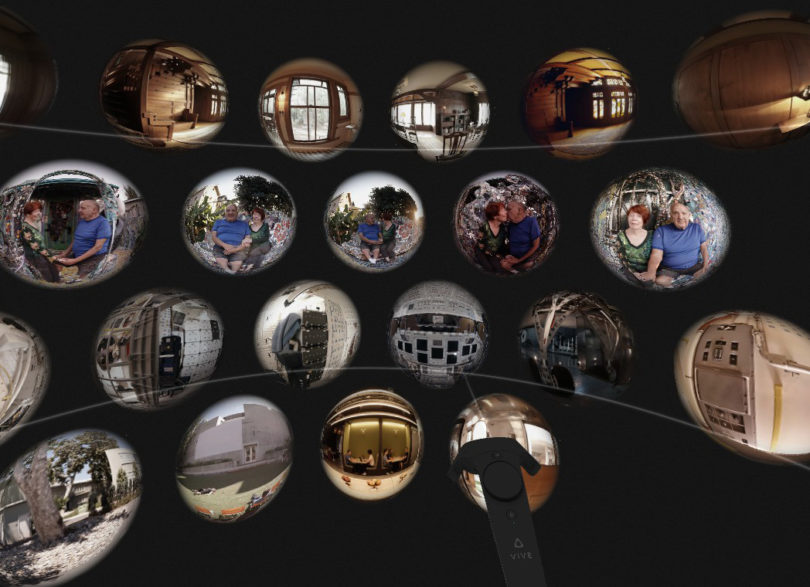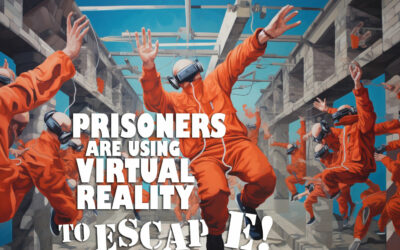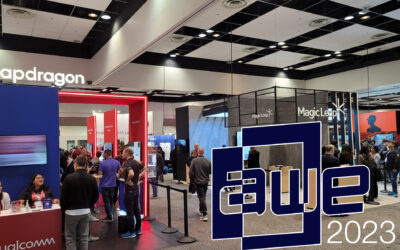Thank you to everyone who came out last night it was great to see you!
Virtual Reality News:
This month in our March 2018 rendition of : “Joei Does the News” we talked a lot about future endeavors that are finally possible due to some very talented developers. Checkout the summary of the topics covered below. From Google’s Hyper realistic light fields demo to Street Fighter AR, we saw some really interesting stuff this past month.
Leap Motion has a history of showing glimpses of the future for VR & AR. Things are being kicked up a notch though on their new VR platform.
You’ve seen it in almost every SciFi movie you’ve ever watched. A character looks down at their arm, an interface appears, and with two quick gestures they accomplish a task. This has been the idea behind virtual and augmented reality for decades.
While there have been small steps to implement something like this into daily life, looking at you Google Glass, the dynamic component of seamless control from gestures has never made its way into the real world. Until now.
The AR headset has yet to be identified, but there are a few demo videos by Magic Leap’s VP of design, Keiichi Matsuda.

Magic Leap has been on our radar for years, and now developers are finally getting a chance to build for the platform.
The Magic Leap system has been in development for years, and a hot focus of ours since the founding of this Meetup group. This week the doors to Willy Wonka’s Digital Chocolate Factory have been opened to developers. There have been dozens of videos showing what Magic Leap is supposed to be capable of, but the proof is in the chocolate pudding.
After their headset was modestly shown in December, Magic Leap finally kicked the doors down and opened the Magic Leap Creator Portal. Sign up is free and currently only open to individuals, but Magic Leap has included access to the Creator Lab and the Lumin SDK which enables developers to create and test software using emulated hardware.
The much anticipated capabilities of eye tracking, meshing, room scanning, Unreal Engine support, and 6DOF hand controller tracking are all confirmed to be not only working, but living up to the expectations. Thank you Magic Leap!
The HTC Vive Pro was announced at the beginning of this year, aside from one small aspect; the price.
While Oculus may be getting side-eye from VR enthusiasts over the latest data breach, the VR community has shifted focus after HTC unveiled their new VIVE Pro’s pricing. The headset alone is being given a $800 MSRP with the controllers and bases to bring the actual price closer to $1,250 USD MSRP.
The reasoning behind the pricing is that this headset is more targeted to industry professionals and commercial ventures, such as the very VRCade you’re standing in right now. While the headset is being sold to consumers, it’s not a consumer targeted pricing model. Which would have been fine, had HTC come out and directly stated such.
However, they didn’t and are now facing some of the largest VR digital backlash on social media and their video channels. For reference, the announcement video at this time of writing has 9x the negative feedback and dislikes as it does positive.
Needless to say, their customer support lines are a little busy right now.
Out of all the movies made during 2002, there was one and only one that made me never want to experience it.
Luckily for myself and everyone else with the same sentiment, developer Abhishek Singh has blessed us with the technology to relive THAT scene from The Ring. Yes, the one where demon child Samara claws her way out of your Sony and comes for your soul/life.
The developer has shown other works including VR dragon-flying simulator, Laser Cat AR, and Super Mario AR; but this is a whole new dark chapter in their developer history. The idea behind it is having an AR system detect and respond to vertical digital surfaces. Meaning that it would change the view on your television from Iron Chef to Samara crawling out of the well in the woods.
As of now, Abhishek has no intent on making this into a public app, but could change course given the public outcry for it. Until then you’ll have to stick to conventional methods to remove the neighbor who always overstays their welcome from your house.
After recreating nightmares, Abhishek Singh unveils his talents in a AR Street Fighter II multiplayer AR experience.
Street Fighter II is arguably the most well known arcade fighting game on a global level. Competitions with large prize pools can be found in almost every country, and the fans have always looked for a way to play without a arcade cabinet. Which gave us most of our modern iterations on console.
Buckle up and get ready though, Street Fighter II : Real World Warrior, well once Capcom makes a decision on the licensing rights. The prototype of the game shows that it has fantastic shading, realistic shadows, low latency, easy controls, and is even able to interact (lightly) with the environment. There’s a bonus stage where you can play as Ken and cars will spawn in parking spots.
It’s already been hinted that if Capcom refuses licensing that the project would move forward with original characters that are similar to existing Street Fighter characters.

What do your eyes and the new VR experience made by Google have in common?
They both see light fields along with show and react to the bouncing of light off of surfaces. That’s right. The future of Virtual Reality video is no longer just a 4 dimensional guided experience with some interactive features. The new “Welcome to Light Fields” is a new app available on Steam VR, HTC Vive, Oculus Rift, and Windows Mixed Reality headsets.
When you move your head the world will react around you. Glimmering surfaces and sunlight react to your presence. Instead of seeing a simple flare caught in one camera’s angle, only to have it disappear; you will now have an even more immersive virtual reality experience.
While the algorithm is still being fine tuned, Google felt confident in the sampler selection they’ve built to showcase it. You can check out the varnished teak and mahogany interiors at the Gamble House in Pasadena, the fragments of glossy ceramic and shiny mirrors adorning the Mosaic Tile House in Venice, and the sun-filled stained glass window at St. Stephen’s Church in Granada Hills. Best of all, the Smithsonian Institute’s Air and Space Museum and 3D Digitization Office gave Google access to NASA’s Space Shuttle Discovery, providing an astronaut’s view inside the orbiter’s flight deck which has never been open to the public.
Want to be a part of our TVR Meetup Group? Simply follow the link below. We have MeetUps on the last Thursday of every month of the year except November and December. We are always looking for guest speakers to talk about the virtual and augmented reality. Does this sound like something you would like to do? Email John at John@lookingglass.services for more details on available speaking months.
Check us out at: https://www.meetup.com/Triad-Virtual-Reality-Meetup/


